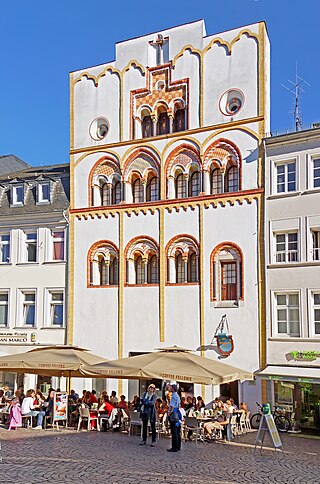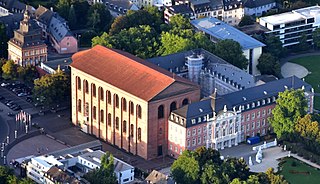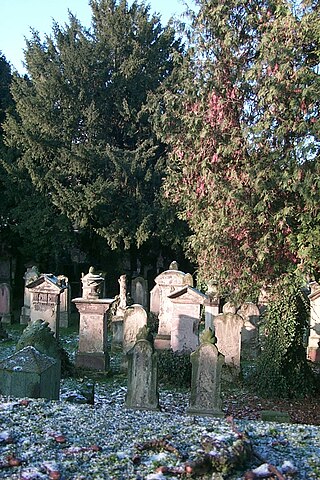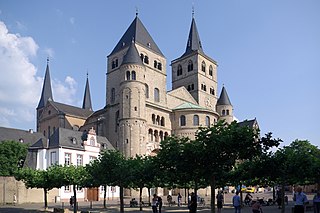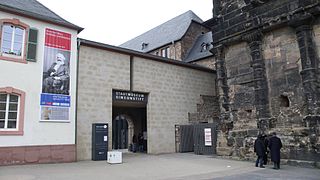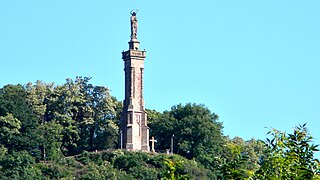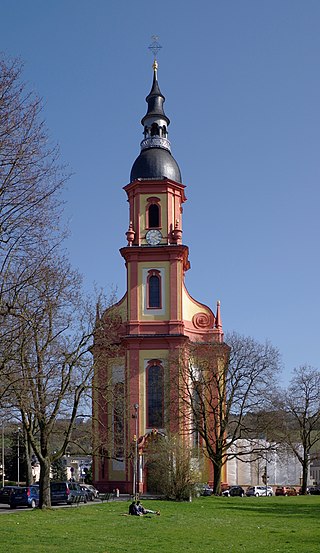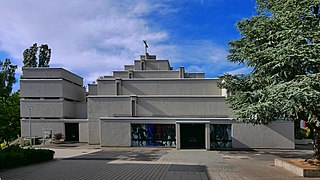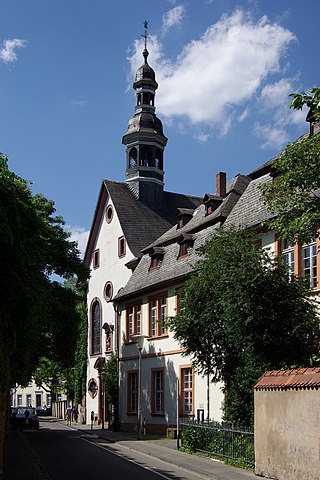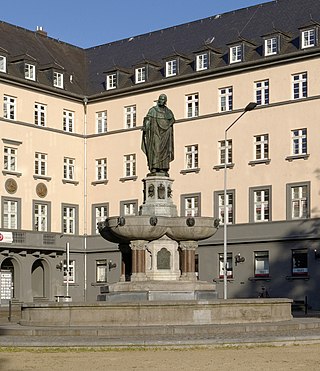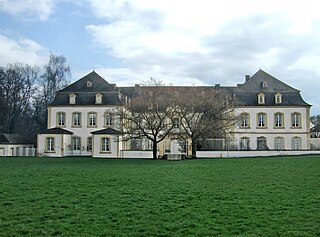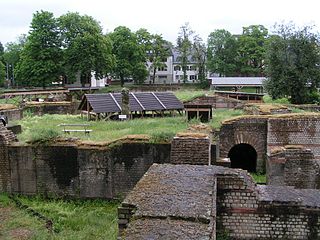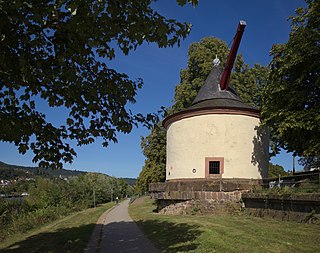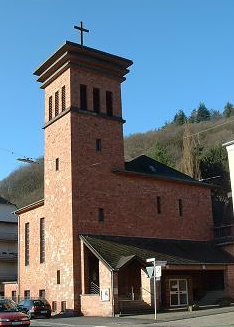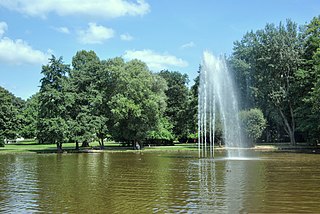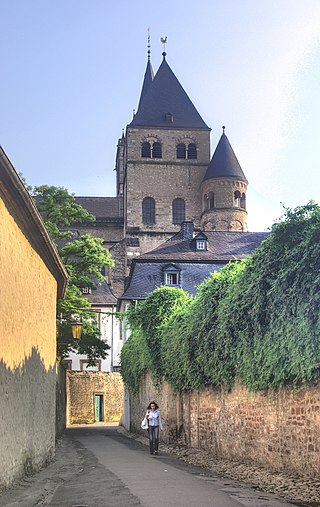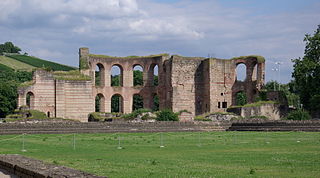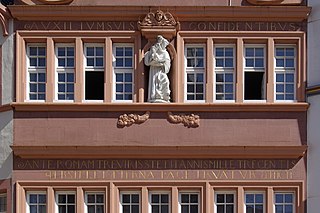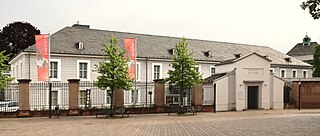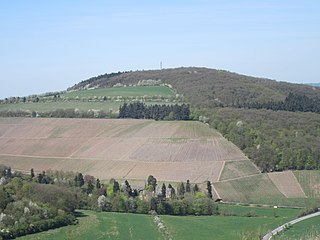27 Sights in Trier, Germany (with Map and Images)
Legend
Welcome to your journey through the most beautiful sights in Trier, Germany! Whether you want to discover the city's historical treasures or experience its modern highlights, you'll find everything your heart desires here. Be inspired by our selection and plan your unforgettable adventure in Trier. Dive into the diversity of this fascinating city and discover everything it has to offer.
Sightseeing Tours in TrierActivities in TrierThe Dreikönigenhaus in Simeonstraße in Trier, not far from the Porta Nigra, is a patrician house in the form of an early Gothic residential tower. The name comes from the time around 1680, when Johann Cornet ran the inn "Zu den drei Königen" there. Originally, the house was called "Zum Säulchen", with reference to the crowning column in the gable and the elaborate marble columns of the windows.
The Electoral Palace in Trier, Germany, was the residence of the Archbishops and Electors of Trier from the 16th century until the late 18th century. It now houses various offices of the federal government and often hosts classical music concerts.
3. Denkmal der jüdischen Kultusgemeinde
Between the Middle Ages and the 20th century, three Jewish cemeteries were established in Trier. Only a few gravestones have been preserved from the medieval cemetery. Between 1620 and 1650, the Jewish cemetery was established in Weidegasse. It is located in Trier-Süd in the street junction between Gilbertstraße and Weidegasse. More than 500 gravestones have been preserved; among the most important graves are those of Mordechai Halevi ben Shmuel Postelberg and Abraham Moshe ben Heschel Lvov, the grandfather and great-grandfather of Karl Marx. After the cemetery could no longer be expanded, it was closed in 1922. Since this year, the Jewish community has been using a section in Trier's main cemetery.
4. Dom St. Peter zu Trier
The High Cathedral of Saint Peter in Trier, or Trier Cathedral, is a Roman Catholic cathedral in Trier, Rhineland-Palatinate, Germany. It is the oldest cathedral in Germany and the largest religious structure in Trier, notable for its long life span and grand design. The central part of the nave was built of Roman brick in the early fourth century, resulting in a cathedral that was added onto gradually in different eras. The imposing Romanesque westwork, with four towers and an additional apse, has been copied repeatedly. The Trier Cathedral Treasury contains an important collection of Christian art. In 1986 the church was listed as a UNESCO World Heritage Site, as part of the Roman Monuments, Cathedral of St. Peter and Church of Our Lady in Trier.
5. Stadtmuseum Simeonstift
The Stadtmuseum Simeonstift Trier, formerly "Städtisches Museum Trier", is located in the buildings of the former Simeonstift around the Brunnenhof right next to the Porta Nigra. The permanent exhibition shows art and cultural treasures from the Middle Ages to the 20th century. Insights into life and everyday life, economy and trade, politics and faith, art and technology of the Trier population are given.
6. Mariensäule
The Marian Column in Trier is a Marian monument in honor of Mary, the mother of Jesus. The monument and plinth are together 40.9 metres high and stand, visible from afar, on the left side of the Moselle valley at a height of 296 metres on the Pulsberg, above the West-Pallien district.
7. Konstantinbasilika

The Aula Palatina, also called Basilica of Constantine, at Trier, Germany, is a Roman palace basilica and an early Christian structure built between AD 300 and 310 during the reigns of Constantius Chlorus and Constantine the Great.
8. Römerbrücke
The Roman Bridge is an ancient structure in Trier, Germany, over the Moselle. It is the oldest standing bridge in the country, and the oldest Roman bridge north of the Alps. The nine bridge pillars date from the 2nd century AD, replacing two older, wooden bridges that date at least as far back as 17 BC. In Roman times, tossing a coin off of the bridge into the Moselle was an offering of good luck. The upper part was renewed twice, in the early 12th and in the early 18th century, after suffering destruction in war. Along with other Roman and Early Gothic sites in Trier, the bridge was inscribed on the UNESCO World Heritage List in 1986 because of its historical importance and architecture.
9. St. Paulin
Saint Paulinus is a Baroque church in the city of Trier, Germany. Constructed between 1734 and 1753, the interior was designed by Johann Balthasar Neumann. The ceiling of the nave features a painting by the artist Christoph Thomas Scheffler. The tomb of the saint after whom the church is named, Paulinus of Trier, is located in the church's crypt.
10. Karl-Marx-Haus
The Karl Marx House museum is a biographical and writer's house museum in Trier. In 1818, Karl Marx, the father of Marxism, which influenced both modern socialism and communism, was born in the house. It is now a museum about Karl Marx's life and writings as well as the communism and socialism.
11. Liebfrauenkirche
The Liebfrauenkirche in Trier, is, according to UNESCO, "the earliest church built in French High Gothic style outside France." It is designated as part of the Roman Monuments, Cathedral of St Peter and Church of Our Lady in Trier UNESCO World Heritage Site. The Trier Dom (cathedral) is next to it, and the two buildings share a common wall.
Wikipedia: Liebfrauenkirche, Trier (EN), Service_times Url, Opening Hours, Heritage Website
12. St. Michael
Sankt Michael is a modern, stylish Roman Catholic parish church in Trier in the Mariahof. It was built in 1968/69 by the Dillinger architect Konny Schmitz (1925–2010) as a cube pyramid. The artists Otto Herbert Hajek (1927–2005) were significantly involved in the interior design of the altar island as a total sculpture and Jakob Schwarzkopf (1926–2001) with the stained glass window painting.
13. Welschnonnenkirche
The Welschnonnenkirche in Flanderstraße in Trier is a Baroque church that was built in 1714–1716 by the Augustinian choristers B.M.V. for the Trier Welschnonnenkloster. It is dedicated to the Assumption of Mary.
14. Balduinbrunnen
The Balduinbrunnen is a fountain in the Rhineland-Palatinate city of Trier (Mosel) at the beginning of Balduinstraße in the Mitte district. The fountain is a monument in memory of Baldwin of Luxembourg, who was Archbishop of Trier from 1307 to 1354 and one of the electors in the Holy Roman Empire of the German Nation. It is a dominant building in terms of urban development, whose location at the intersection of Christophstraße and Balduinstraße in the northeast of the Alleenring was originally intended for the Kaiser Wilhelm Monument, which was erected on 15 May 1893 on the Domfreihof. The distance of the fountain to Trier Central Station is about 200 meters.
15. Schloss Quint
Quinter Schloss is a baroque castle on the left bank of the Moselle in the Trier district of Quint. It was built around 1760 by the owners of the Quinter Hütte, the Pidoll family from Lorraine, and is now a listed cultural monument. It can only be visited from the outside.
16. Barbarathermen
The Barbara Baths are a large Roman bath complex in Augusta Treverorum, modern-day Trier, Germany. Stretching over 42,000 square meters, it is the largest Roman bath north of the Alps. Along with other sites in Trier, the bath complex was designated a UNESCO World Heritage Site in 1986 as part of the Roman Monuments, Cathedral of St. Peter and Church of Our Lady in Trier site, because of its historical importance and sprawling architecture.
17. Theater Trier
The Theater Trier is the municipal theatre of Trier, Rhineland-Palatinate, offering opera and musical, dance and drama. The company dates back to 1802. The current house was completed in 1964, and needs renovation. The director since 2018 is Manfred Rolf Langner.
18. Jüngerer Moselkran
The customs crane, also known as the Old Customs Crane or the Younger Moselle Crane, is a harbour crane in Trier. The baroque stone building with double cantilevers stands on the right bank of the Moselle near the main customs office.
19. Evangelische Kirche Ehrang
The Evangelical Church of Trier-Ehrang is the church for the parish of Ehrang of the Protestant parish of Ehrang, which has been independent since 1946, and one of three churches and nine preaching offices of this parish. The formerly independent town of Ehrang is now a district in the northwest of Trier in Rhineland-Palatinate, Germany.
20. Nells Park
Nells Park is a 95,000 m² park on the lower Avelsbach in Trier. It was created by the canon at St. Paulin Abbey, Nikolaus Nell. Between 1792 and 1793, he bought the swampy lands from the Teutonic Order and drained them to create the park. The park in the early romantic Anglo-Dutch style was completed in 1801. In 1861, a neoclassical mansion was built, which now houses the Hotel Nells Park. In 1940, the park was acquired by the city of Trier and expanded during the war years. An expansion of the water areas also served to provide extinguishing water for the nearby provisions office at the time. In honour of the rose breeder Peter Lambert, a rose garden was created in Nells Park in 1958 under horticultural director Gottfried Rettig.
21. Kapelle ad Quercum
Sieh um Dich is a short alley in Trier's city center not far from Trier Cathedral within the Domimmunität, which connects the Domfreihof with Rindertanzstraße. Together with the southern section of Liebfrauenstraße, it follows a Roman cardo. At the latest since the construction of the gatehouse of today's cathedral provost's office around the middle of the 17th century, the alley, flanked by high curial walls, leads almost at right angles to the cathedral courtyard.
22. Kaiserthermen
The Trier Imperial Baths are a large Roman bath complex in Trier, Germany. The complex was constructed in the early 4th century AD, during the reign of Constantine I. During that time, Trier was a major imperial hub, being a primary residence for Constantine's son Crispus. The baths were built around hot water pools reaching 40°C. Underneath the complex was a network of underground passageways used by the staff which can still be seen today, along with the remains of the sewer system. However, the baths were never completed and were made into a castle in the Middle Ages.
Wikipedia: Trier Imperial Baths (EN), Website, Heritage Website
23. Rotes Haus
The Red House is located in Dietrichstraße on the market square in Trier. The house was built in 1684 by the master builder Wolfgang Stuppeler for the cathedral secretary Johann Wilhelm Polch. After its destruction in the Second World War on 21 December 1944, the house was rebuilt between 1968 and 1970. There is currently a café in the house. On the front of the house you will find the inscription:ANTE ROMAM TREVIRIS STETIT ANNIS MILLE TRECENTIS. PERSTET ET ÆTERNA PACE FRVATVR. AMEN.
24. Museum am Dom
The Museum am Dom Trier is a museum of the Diocese of Trier, which has the task of researching the cultural and piety history of the Diocese of Trier and making it accessible to the public. In addition, the museum researches the late antique predecessor buildings of Trier Cathedral, the oldest German episcopal church.
25. Grüneberg
The Grüneberg is a 348 m high mountain between Trier and Mertesdorf in Rhineland-Palatinate, Germany. The summit is located in the Ruwer-Maximin district near Grünhaus (Mertesdorf). The street Am Grüneberg belongs to Trier-Kürenz.
26. Spielzeugmuseum

The Trier Toy Museum was opened in May 1989 by toy collector Rolf Scheurich and his wife Heidi Scheurich, a doll collector, initially in Nagelstraße in Trier. At the time, it was the largest privately run museum of its kind in Germany. It remained in Scheurich's possession until its sale in 2000; since then, it has been run by the association of the same name, which was founded specifically for preservation. In October 2003, it moved to the "Steipe", a historic building on Trier's main market.
27. St. Josef
The former Redemptorist monastery of Sankt Josef is a monastery building with an associated three-aisled church in Trier, Feldstraße 18, built in 1854–55, three-storey complex in neo-Romanesque style made of red sandstone.
Share
Disclaimer Please be aware of your surroundings and do not enter private property. We are not liable for any damages that occur during the tours.
